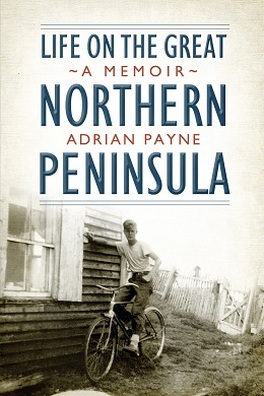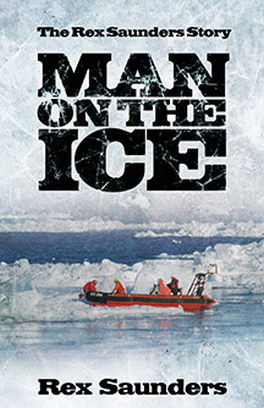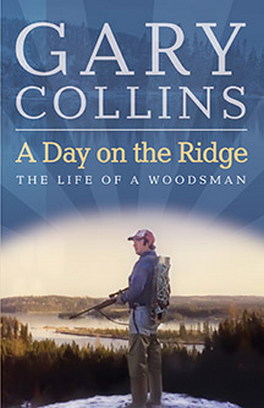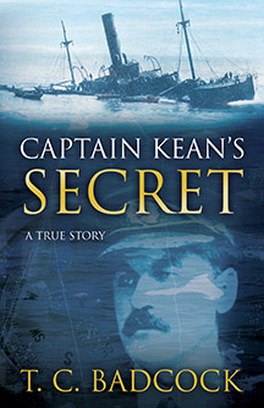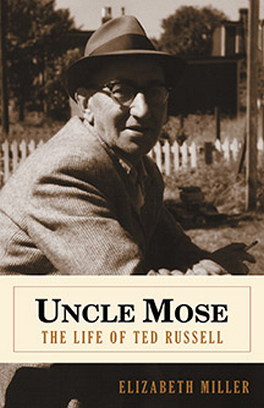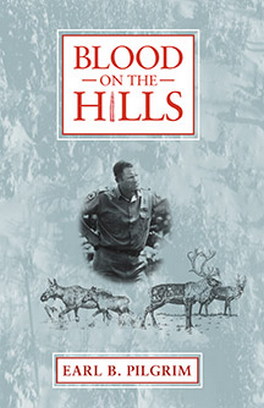Much of the appeal of rural Newfoundland lay in the freedom of being your own boss and a love of the great outdoors. You were tied to the seasons, and each one played a big role in your life. Spring and summer were the fishing season and a time when new life began. Fall was the hunting, trapping, and harvesting season. If you had livestock, you waited for the first frost—Mother Nature’s deep-freeze—and then you butchered your animals. Winter was a time for gathering firewood. You made sure you had enough to do you until the next year. A man was judged by the size of his woodpile in the spring. It was a symbol of his ability to provide every necessity for his family. Adrian Payne’s memoir begins in 1940, with his early childhood in Cow Head and Parson’s Pond, and then Hawke’s Bay, where his family lived in a company home while his father worked for Bowater’s Pulp and Paper Company. It has been said that a person’s real education begins after school, and rightly so. The reader follows Adrian through his early years of hard work and rich rewards in the lumber woods, hunting moose in the wild north, and adventures on the Long Range Mountains. Told anecdotally, this charming memoir illustrates a life well-lived on the Great Northern Peninsula, where women and men worked hard from season to season and family always came first.
In the 1940s, when I was just a boy, some things seemed larger than life. Distances, especially, always seemed very long, and maybe then they really were.
I remember walking with my grandfather on some of his land, which was a wooded area with lots of white spruce, a place that local people called “up on the island.” He went there to cut logs that were used to make railway ties for the Newfoundland Railway. The railway was narrow-gauge and operated in Newfoundland from 1898 until 1988. With a total track length of 906 miles, it was the longest narrow-gauge railway in North America. It was just three feet, six inches wide. The trees that Grandpop cut had to be spruce, eight feet long and six inches in diameter at the top. He had to remove the rind (bark) and deliver the logs to the coastal boat. For this, my grandfather was paid twenty-five cents per log.
Certainly, this was little enough money for his hard work, but it was cold cash. The opportunities to make cash were few and far between, so he took advantage of it. Things were much cheaper back then. He could probably buy a barrel of flour for $2, a chest of tea for $5, and a gallon of molasses for fifty cents. These things would go a long way during the winter months.
Grandpop provided for his family very well. He hunted caribou and rabbits and raised sheep and cows, which provided milk and butter. He fished lobster and cod. He and Granny grew their own vegetables and picked berries to make jams. Granny spun the wool from the sheep on her spinning wheel and turned it into yarn. From this yarn she knitted socks, mitts, sweaters, and sometimes long underwear for Grandpop. He would wear this mainly when he hunted across the mountain in the winter.
Because I was so young, I guess I wasn’t much help, but I can recall helping him remove the bark from the logs. Just being with my grandfather was enough to make me happy. Both of my grandparents, Michael and Annie Keough, were very kind and gentle people. I adored them! I don’t ever remember them saying a cross word to any of us grandkids.
“Up on the island” was not really an island. It was a point of land jutting out into Parson’s Pond. It was somewhat mysterious to me at the time. As kids, my brother Harold (who was four years older) and I went there to play. Also, we would set fish hooks with herring, or some other kind of bait, to catch gulls. Back then there were no chickens to be bought in the stores and no Kentucky Fried Chicken. The only chicken you had to eat was an old hen that no longer laid eggs or a rooster that was no longer needed in the henhouse. When I was older, it was always my job to chop their heads off so we’d have something for Sunday dinner. Of course, gulls were a real treat for Sunday dinner for a lot of people. I recall eating them, but not too often. My parents and grandparents were one of the better-off families in the area at that time.
I remember one day when my brother Harold and I went up on the island to check our gull glees (hooks). We had them set in water up to our knees and anchored down with a rock with about two feet of string attached. As we were going out across the flats, we saw a gull struggling to fly away. We ran as fast as we could toward it, hoping we could catch it and make Mom proud. We made it to the gull and wrung its neck just in time. There was just enough of the hook in its tongue to hold it. We were so excited to be able to bring a gull home to Mom.
We were very happy boys going home with a gull in tow. I wanted to carry it for a while, but my brother said, “No, you’re too small.” I kept pleading, and finally he let me have a turn. When we got home and Mom saw the gull, she was real proud of her two boys. Now we had to run and tell all our friends. They had to come and see for themselves. “Hey, guess what, boys? We caught a gull today, and you can come and see for yourselves if you don’t believe us.”
All along the Northern Peninsula, men would have gull blinds on the cliffs. On windy days, as the gulls would trim along the cliffs, the men would shoot them with shotguns or muzzleloaders.
When I was no more than four or five years old, I followed my grandfather wherever he went—as long as I was allowed. I recall one fine summer day when I went with him to his lobster gear. We walked out to the brook, the inlet to Parson’s Pond, where he kept his dory. I was so excited! He let me push on the paddles as we rowed out into the ocean to haul his lobster pots. He would also take me trout fishing, either at the mouth of Parson’s Pond Brook or a place inland called Otter Brook. When he caught a trout, I would grab it if it flicked off the hook. There were no store-bought rods or reels at that time. He would go into the woods and cut a long, slender pole about ten feet long. Then he’d tie a piece of string at the top and bait the hook with salt pork. I really enjoyed my time with him.
At that time, you were allowed to keep every lobster that was caught. There were no restrictions. Each family had its own little factory, as did my grandfather. They had large vats made out of some kind of metal in which they boiled the lobsters. My grandmother, my mother, and her sisters would shell the lobsters and put them in one-pound cans.
My mother’s job was to hook the meat out of the arms (joints) with the handle of a teaspoon. Well, she didn’t like this job very much, as it was hard on the hands. The arms had to be disconnected from the claws, and this required some strength, especially for a woman. There were a lot of spikes in the arms, and while breaking them apart, you’d often stick them in your hands. She later told us that when my grandparents weren’t watching, more than one arm went into the barrel with the rest of the shells. Granny and Grandpop never suspected a thing! My mother still laughed while relating this story years later.
When the lobsters were shelled and in the cans, Grandpop would seal them with a factory-made sealer. Then they would be thrown back into the vat of boiling water to be “blown off.” This would get rid of any air in the cans. When the cans were taken out of the boiling water, the ends would be popped by the air inside. Grandpop would then prick a hole in the lid to let the air out. When this was completed, he would then solder over the hole to keep it airtight.
After all this work—catching, cooking, shelling, and canning—the lobster would be sold to a local merchant or shipped to St. John’s. A case of twenty-four cans sold for around $5. Certainly this was a lot of work, but not a lot of money.
Mr. Payne recounts his stories in an unembellished, yet vivid manner. I found it all very interesting-- The Miramichi Reader --
Vivid recountings-- The Telegram --
